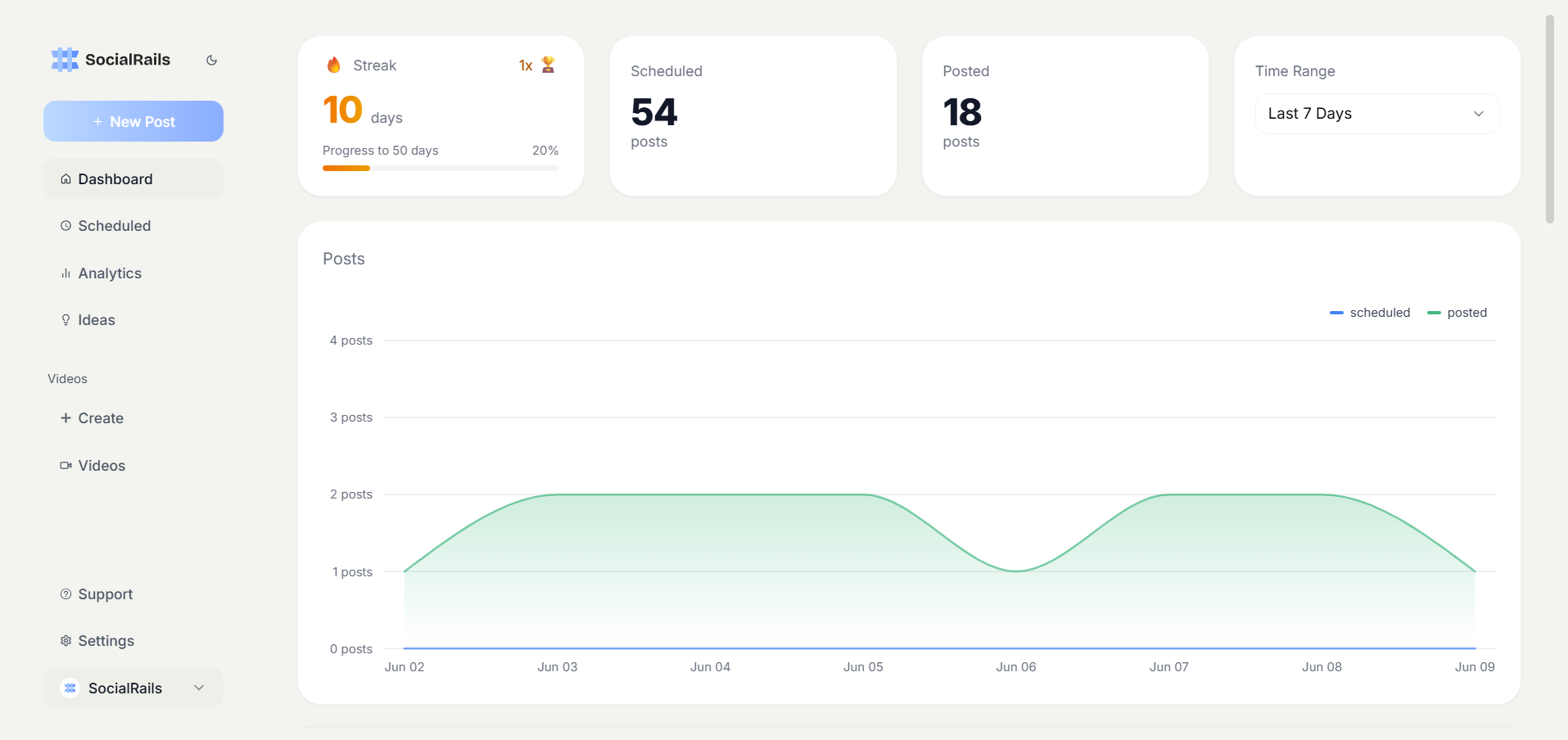AOV Meaning
AOV (Average Order Value) is the average dollar amount customers spend per transaction in your store. It's calculated by dividing total revenue by the number of orders over a specific time period. AOV is a crucial metric for measuring customer spending patterns and optimizing social media marketing campaigns.
🤔 Quick Knowledge Check
How do you calculate Average Order Value (AOV)?
Why AOV matters for social media marketing
Create content, post everywhere
Let AI do the work. Ideas, posts, images, carousels. Scheduled in seconds.
Start your free trial
Measure campaign effectiveness
AOV helps you determine which social media campaigns and platforms drive the highest-value customers to your business.
Optimize ad spend
Understanding AOV by traffic source allows you to allocate more budget to social media channels that bring valuable customers.
Improve targeting
High AOV data reveals which audience segments are most profitable, helping you refine your social media targeting strategies.
Calculate customer lifetime value
AOV is a key component in determining customer lifetime value (CLV), essential for setting appropriate customer acquisition costs. Use our Customer Lifetime Value Calculator to calculate CLV based on AOV and purchase frequency.
How to calculate AOV
Basic AOV formula
AOV = Total Revenue ÷ Number of Orders
Example calculation
If your store generated $50,000 in revenue from 500 orders:
AOV = $50,000 ÷ 500 = $100
This means your average customer spends $100 per transaction.
AOV benchmarks by industry
| Category | Rate | Description |
|---|---|---|
| Electronics | Higher Range | High-value tech products |
| Fashion | Mid Range | Clothing and accessories |
| Beauty | Lower-Mid Range | Cosmetics and skincare |
| Home & Garden | Variable | Furniture and decor |
| Sports | Mid Range | Athletic gear and equipment |
| Books | Lower Range | Physical and digital books |
Social media strategies to increase AOV
Product bundling campaigns
Create social media posts showcasing product bundles or collections that encourage customers to purchase multiple items together.
Upselling through content
Share educational content that demonstrates premium product features or upgrades, naturally leading to higher-value purchases.
Social proof for premium products
Use customer testimonials and user-generated content to build trust in higher-priced items on your social media channels.
Limited-time offers
Create urgency with exclusive social media promotions that encourage customers to add more items to their cart.
Tracking AOV from social media
AOV Tracking Setup
UTM Parameters
Add tracking codes to social media links
Google Analytics
Set up ecommerce tracking for each platform
Platform Analytics
Use native social media analytics tools
Conversion Tracking
Monitor purchases from social traffic
Set up UTM tracking
Use UTM parameters in your social media links to track which platforms and campaigns drive the highest AOV customers.
Monitor conversion paths
Analyze how social media visitors navigate your site and which touchpoints lead to higher-value purchases.
Compare platform performance
Track AOV differences between Instagram, Facebook, TikTok, and other social media channels to optimize your strategy.
Measure campaign ROI
Calculate the return on investment for social media campaigns by comparing advertising costs to revenue generated.
AOV optimization techniques
Cross-selling strategies
Recommend complementary products during the checkout process or through targeted social media retargeting campaigns.
Free shipping thresholds
Set minimum order amounts for free shipping that encourage customers to add more items to reach the threshold.
Loyalty programs
Reward customers with points or discounts for larger purchases, encouraging them to increase their order value over time.
Personalized recommendations
Use customer data to suggest relevant products through social media ads and email marketing campaigns.
Common AOV mistakes
Focusing only on transaction volume
Prioritizing the number of orders over order value can lead to lower profitability despite higher sales volume.
Ignoring seasonal variations
Not accounting for seasonal changes in AOV can lead to inaccurate business planning and inventory management.
One-size-fits-all approach
Using the same AOV optimization strategies for all customer segments instead of personalizing based on behavior and preferences.
AOV vs related metrics
AOV vs Customer Lifetime Value (CLV)
- AOV measures spending per transaction
- CLV measures total spending over the entire customer relationship
AOV vs Conversion Rate
- AOV focuses on order value
- Conversion rate measures the percentage of visitors who make purchases
AOV vs Revenue Per Visitor (RPV)
- AOV only includes customers who purchased
- RPV includes all website visitors, whether they purchased or not
Improving AOV through social commerce
Instagram Shopping features
Use Instagram Shopping tags and product catalogs to showcase higher-value items and encourage bundle purchases.
Facebook Shop optimization
Create attractive product collections in your Facebook Shop that naturally lead to higher order values.
TikTok Shopping integration
Leverage TikTok's shopping features to demonstrate product value and drive higher-value purchases through engaging video content.
Social media advertising
Run targeted ads for premium products or bundles to audiences most likely to make higher-value purchases.
Key takeaways
- AOV measures average spending per transaction and is crucial for understanding customer value and profitability
- Track AOV by traffic source to identify which social media platforms drive the most valuable customers
- Use social media strategically to showcase product bundles, premium items, and cross-selling opportunities
- Set up proper tracking with UTM parameters and analytics tools to measure AOV from social media campaigns
- Optimize continuously by testing different strategies like free shipping thresholds and personalized recommendations
- Consider seasonal patterns when analyzing AOV trends and setting business goals and inventory levels
Understanding and optimizing AOV is essential for building a profitable ecommerce business. Use social media strategically to drive not just traffic, but high-value customers who contribute to sustainable growth.
Ready to increase your AOV? Start by analyzing your current performance and implementing social commerce strategies that encourage higher-value purchases.